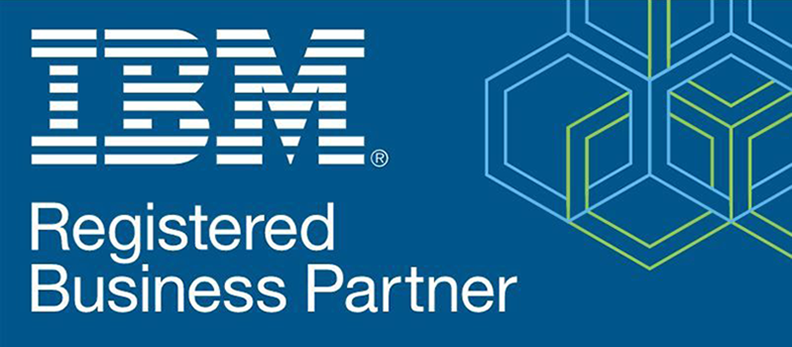The Rise of De-Clouding (Cloud Repatriation): What It Means for IBM i and AIX Users
25 April 2025 - 8 Minute Read
Over the past decade, the public cloud was promoted as the inevitable destination for enterprise infrastructure, offering flexibility, scalability, and reduced capital expenditure. However, a significant shift began to take hold in 2024.
A Barclays CIO survey conducted last year found that 83% of enterprise CIOs planned to repatriate at least some workloads by the end of 2024, up from 43% just four years earlier. Similarly, an IDC report from mid-2024 revealed that 80% of IT leaders expected some level of repatriation of compute and storage resources within a 12-month horizon, citing rising costs and operational inflexibility.
This reversal was not a knee-jerk reaction, but a measured course correction. Enterprises began critically re-evaluating the assumptions that had fuelled their cloud-first strategies. In this blog, we explore the forces behind this shift, the specific impact on IBM Power Systems users running IBM i and AIX, and why the real decision may no longer be “cloud vs. on-prem” but rather hybrid vs. repatriation.
Why Are Businesses De-Clouding (or Repatriating)?
1. Cost Overruns
Cloud cost models often begin attractively low but can scale dramatically and unpredictably with usage. Many organisations have experienced classic bill shock, paying far more than anticipated due to overprovisioning, unpredictable consumption, and high data egress fees. But today, cost challenges go far beyond just usage-related surprises.
Over the past four years, inflationary pressures have driven up the price of power, processors, storage, and software licensing. Cloud providers have had little choice but to pass these costs on. Major hyperscalers like AWS, Microsoft Azure, and Google Cloud introduced pricing increases across compute, storage, transfer, and support services. These aren’t always transparent or negotiable, prompting many organisations to question the long-term cost-efficiency of cloud-first strategies.
It’s not just the big three. Specialist cloud providers are also impacted. For example, any provider offering x86 cloud services built on VMware is now grappling with the substantial price hikes introduced by Broadcom following their acquisition of VMware. These increases inevitably get passed through to the end user, adding further complexity and cost to workloads that may have already been migrated for cost-saving purposes.
Similarly, cloud providers delivering IBM i and AIX solutions have faced rising costs driven by the same factors. These pressures are also being reflected in higher service charges to the end customer. Even specialist platforms are not immune from the broader inflationary trends reshaping the cloud landscape.
As a result, de-clouding or repatriation is no longer driven solely by poor forecasting or overuse. It is also about reassessing whether cloud pricing is sustainable in the current economic and vendor landscape.
2. Loss of Control
As businesses mature in their digital strategies, they are realising that public cloud often comes at the cost of visibility and fine-grained control. Whether it’s delayed support tickets, a lack of insight into the infrastructure layer, or constraints around customisation, relinquishing that control can be problematic for mission-critical systems.
One of the most critical concerns arises during serious outages. The larger the cloud provider, the more they tend to rely on automated responses during incidents such as status pages, templated updates, and delayed root cause analysis. While automation scales well operationally, it often leaves customers frustrated and in the dark when applications become unavailable. The ability to speak to a person becomes nearly impossible at precisely the moment it’s needed most.
3. Security, Compliance and Sovereignty
Particularly in regulated industries, compliance with data protection laws is non-negotiable. While public cloud providers offer strong security postures, organisations are ultimately accountable for how and where their data is processed. For some, the assurance of self-managed, on-prem infrastructure makes regulatory adherence clearer and more manageable.
4. Performance and Latency
Latency-sensitive applications can suffer in shared, multi-tenant cloud environments. For workloads requiring high I/O throughput, low latency, or specific hardware acceleration, public cloud is not always the best fit.
5. Sometimes It’s the Provider, Not the Cloud
It's important to note that cloud isn't inherently the problem. It’s often about the provider fit. Some organisations de-cloud not because the model is wrong, but because their current provider can't deliver the level of service, transparency, or support needed. In these cases, switching to a better-suited cloud partner can achieve many of the same outcomes as repatriation. Better cost control, stronger SLAs, and improved alignment with business needs. The considerations for changing provider, such as data migration, interoperability, and risk management, are very similar to those involved in full repatriation.

The IBM i and AIX Angle
Specialised Workloads
IBM i and AIX workloads are often deeply integrated, bespoke, and critical to business operations. They're not easily lifted and shifted. Some early cloud migrations underestimated the effort required to maintain the same performance and availability levels.
Limited Cloud Portability
While IBM Power Virtual Server (PowerVS) has made strides in offering cloud-hosted AIX and IBM i instances, these services remain relatively niche compared to the broader x86-dominated IaaS landscape. Traditional public cloud environments do not natively support IBM Power architecture. This limits the ability to move IBM i and AIX workloads easily between providers or to integrate them into wider multi-cloud strategies.
As a result, many organisations have turned to specialist cloud providers that offer hosted IBM i and AIX services. These providers have supported critical workloads over the past decade, offering valuable expertise and continuity. However, migrating from one provider to another, or into PowerVS, raises important questions.
Choosing a new provider is not simply a technical migration. It’s a strategic decision. Is the move solving the underlying issues, or simply swapping one set of limitations for another? Without careful scrutiny, businesses risk moving from the frying pan into the fire. They may end up locked into new commercial models, facing similar or escalating costs, or constrained by provider-specific tooling, support models, or architecture decisions.
And while many of these providers market themselves as experts in legacy workloads, there is often limited visibility into the underlying infrastructure. With inflationary pressures and rising operational costs, some providers may be making difficult trade-offs. Are they continuing to invest in current and supported compute, storage, and networking platforms? Are they maintaining robust security patching and OS-level updates? Or are they quietly sweating ageing assets to preserve margins, potentially increasing risk for the customer?
Due diligence is essential. When evaluating a provider, whether new or existing, organisations should demand transparency around the infrastructure lifecycle, security posture, and reinvestment strategy. The platform may be running stable applications, but stability built on ageing foundations can create silent vulnerabilities that only surface when it’s too late.
Vendor Management: Cloud Doesn’t Mean Hands-Off
One of the persistent myths around cloud is that responsibility moves entirely to the provider. While infrastructure may be hosted and managed externally, the accountability for performance, compliance, and risk still rests with the business.
As cost pressures rise and complexity increases, so too does the importance of active vendor management. Enterprises must be prepared to challenge cloud providers, specialist or hyperscaler, on their contractual obligations. That includes response times, patching schedules, support availability, performance SLAs, and data security measures.
Too often, issues only come to light during a major incident or audit. By that point, accountability is hard to enforce and the impact has already been felt. Businesses should treat cloud providers with the same rigour they apply to in-house teams. Reviewing, validating, and holding them to account for the commitments made.
Cloud doesn't eliminate the need for operational oversight. It intensifies it.
Hybrid vs. Repatriation: The Real Decision
As this wave of de-clouding unfolds, it’s tempting to frame the decision as a binary: cloud or on-prem. But for IBM i and AIX users, the more realistic and strategic decision is hybrid versus full repatriation.
Benefits of a Hybrid Model
- Flexibility to run stable workloads on-prem while using cloud for development, test, or new services
- Improved data governance and control without losing innovation potential
- The ability to integrate with modern cloud-native services without full migration risk
When Repatriation Makes Sense
- Lower long-term cost, in the right circumstances
- Maximum control, performance, and platform visibility
- The best option when cloud benefits haven’t materialised, or when risk or compliance concerns outweigh flexibility
Conclusion
The cloud isn’t dead, but the honeymoon is over. For many, especially those running IBM i and AIX on Power Systems, the realities of cloud economics, performance, and operational control have prompted a serious re-evaluation.
De-clouding, or cloud repatriation, isn’t about rejecting cloud entirely. It’s about using it with purpose and clear-eyed strategy.
Sometimes, the answer is switching to a better provider. Other times, it’s moving workloads back home. For many, it’s building a balanced hybrid model that supports the business today while preparing for tomorrow.
The real question is not public cloud or not. It’s how do we architect an infrastructure that delivers performance, governance, and cost efficiency for our most critical workloads?
For IBM Power users, hybrid isn’t a halfway house. It’s a destination in its own right.
About the Author

Chris Smith
Chris Smith is a sales leader and consultant with over 30 years of experience in IT managed services. With a background in IBM hardware maintenance, he transitioned from field engineer to sales and marketing director, creating the foundations for Blue Chip Cloud, which became the largest IBM Power Cloud globally at the time. Chris played a key role in the 2021 sale of Blue Chip and grew managed services revenue by 50%. He’s passionate about building customer relationships and has implemented Gap Selling by Keenan to drive sales performance. Now, Chris helps managed service providers and third-party maintenance businesses with growth planning and operational improvement.
LinkedIn






